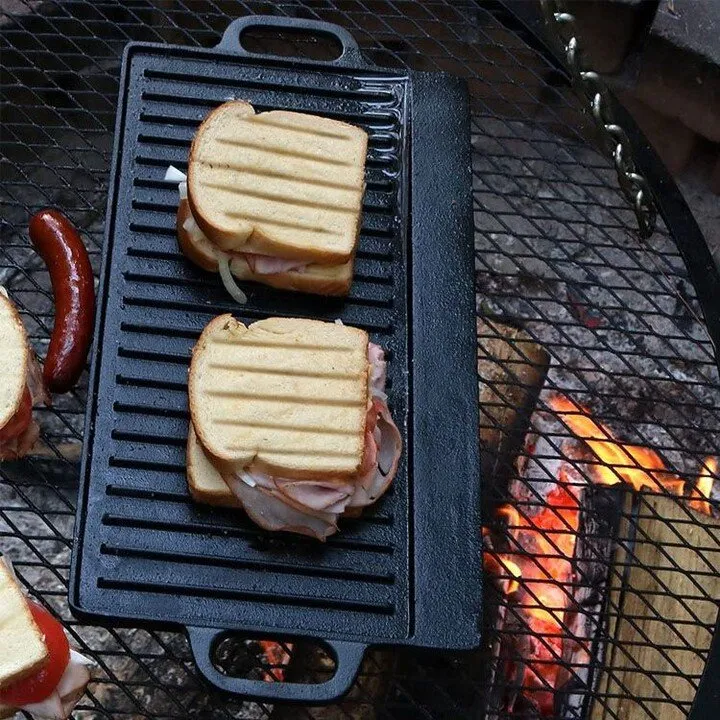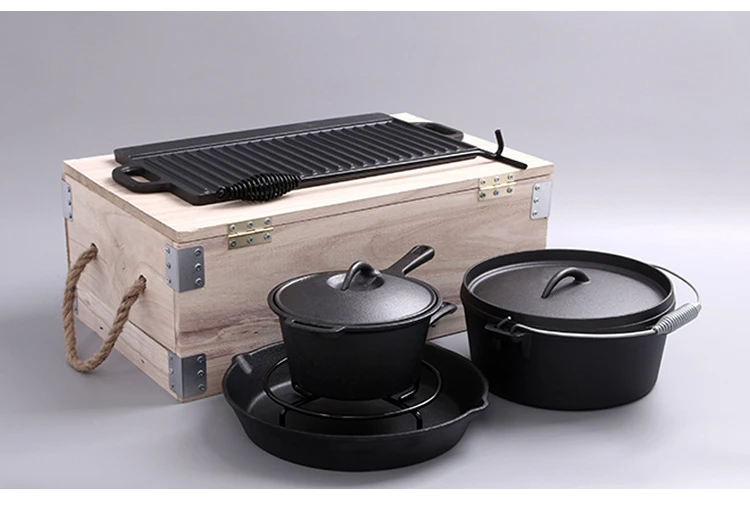
Feb . 12, 2025 13:37
Back to list
ENAMELED CAST IRON DUTCH OVEN POT, CASSEROLE DISH - ROUND RED 10.23" (26 CM)
Exploring Varied Terminology for the Dutch Oven What You Need to Know
Understanding the Braiser and Römertopf Yet another variant is the braiser, which serves a function similar to that of a Dutch oven. However, braisers typically feature a wider surface area and shallower depth, making them perfect for reducing sauces or browning meats. They are ideal for recipes requiring ingredients to be both sautéed and simmered without transferring to different cookware, simplifying the cooking process. Conversely, the Römertopf, a technique rather than a direct alternative name, underscores an ancient method of clay pot cooking reminiscent of what a Dutch oven achieves with modern materials. The Römertopf is particularly valued for its ability to retain natural juices and flavors, making it an ecological option that celebrates cooking traditions predating the metal-cast Dutch oven. Authority and Trust in Dutch Oven Craftsmanship Dutch ovens are not merely pots; they are culinary instruments steeped in history and craftsmanship. Companies that manufacture these vessels, like Lodge and Staub, uphold rigorous quality standards that assure consumers of their product's longevity and performance. In the realm of cookware, the trustworthiness of a Dutch oven’s construction is tantamount to its effectiveness. Consumers can rely on the authoritative research and expertise poured into each design, ensuring that their investment is safeguarded by decades, if not centuries, of culinary tradition and innovation. Capstone Choosing the Right Moniker As you enhance your cooking repertoire, recognizing the various names and implications of a Dutch oven can deepen your understanding and broaden your culinary horizon. Whether you refer to it as a cocotte, casserole, French oven, or embrace its usage akin to a Römertopf, these names reflect a rich tapestry of cultural influence and culinary evolution. Selecting the right type of Dutch oven—by any name—should factor in the nuances of your cooking style and the authenticity you desire in your culinary creations. Bon appétit!


Understanding the Braiser and Römertopf Yet another variant is the braiser, which serves a function similar to that of a Dutch oven. However, braisers typically feature a wider surface area and shallower depth, making them perfect for reducing sauces or browning meats. They are ideal for recipes requiring ingredients to be both sautéed and simmered without transferring to different cookware, simplifying the cooking process. Conversely, the Römertopf, a technique rather than a direct alternative name, underscores an ancient method of clay pot cooking reminiscent of what a Dutch oven achieves with modern materials. The Römertopf is particularly valued for its ability to retain natural juices and flavors, making it an ecological option that celebrates cooking traditions predating the metal-cast Dutch oven. Authority and Trust in Dutch Oven Craftsmanship Dutch ovens are not merely pots; they are culinary instruments steeped in history and craftsmanship. Companies that manufacture these vessels, like Lodge and Staub, uphold rigorous quality standards that assure consumers of their product's longevity and performance. In the realm of cookware, the trustworthiness of a Dutch oven’s construction is tantamount to its effectiveness. Consumers can rely on the authoritative research and expertise poured into each design, ensuring that their investment is safeguarded by decades, if not centuries, of culinary tradition and innovation. Capstone Choosing the Right Moniker As you enhance your cooking repertoire, recognizing the various names and implications of a Dutch oven can deepen your understanding and broaden your culinary horizon. Whether you refer to it as a cocotte, casserole, French oven, or embrace its usage akin to a Römertopf, these names reflect a rich tapestry of cultural influence and culinary evolution. Selecting the right type of Dutch oven—by any name—should factor in the nuances of your cooking style and the authenticity you desire in your culinary creations. Bon appétit!
Previous:
Latest news
-
Season Cast Iron Perfectly with GPT-4 Turbo TipsNewsAug.01,2025
-
High Quality Cast Iron Cookware - Baixiang County Zhongda MachineryNewsAug.01,2025
-
Premium Cast Iron Pan: Durable & Perfect HeatNewsAug.01,2025
-
High Quality Kitchen Durable Black Round Cast Iron Cookware Pancake Crepe Pan-Baixiang County Zhongda Machinery Manufacturing Co., Ltd.NewsAug.01,2025
-
Cast Iron Cookware - Baixiang County Zhongda Machinery | Nonstick, Heat ResistanceNewsAug.01,2025
-
High Quality Kitchen Durable Black Round Cast Iron Cookware - Baixiang County Zhongda Machinery | Non-Stick, Heat Retention, DurableNewsJul.31,2025


